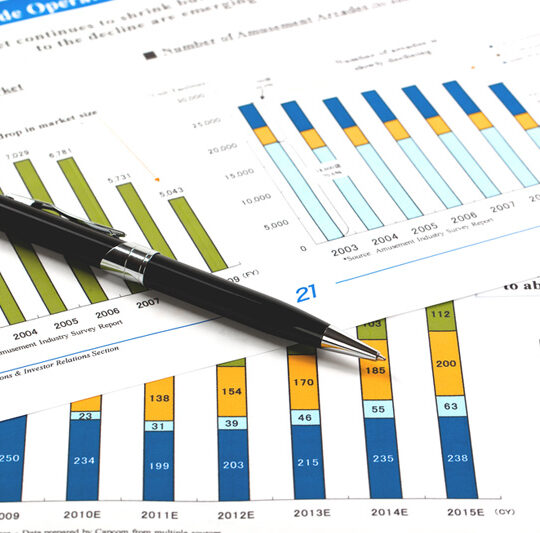
If you’re shopping for a new home, you’ve probably been paying close attention to the latest mortgage news and information. A mortgage is a loan that lets you borrow against the value of a home. In exchange, you pay interest to your lender throughout the life of the loan. The mortgage interest rate you pay significantly affects your monthly payment, the overall cost of the loan, and how much house you can afford.
Mortgage rates have been on a wild journey over the past year and half. They’ve more than doubled from their pandemic lows, peaking above 7% in the fall of 2022 — the highest they’ve been in 20 years. They’ve dipped slightly since then, but not enough to convince homeowners who secured a rock-bottom mortgage rate in 2020 or 2021 to trade up to a more expensive loan. In fact, the average monthly housing payment in April hit an all-time high of $2,538, thanks largely to exorbitant mortgage rates, according to Redfin.
Still, there have been pockets of opportunity mixed into the sky-high rates. Rates dropped after the banking crisis in mid-March, and mortgage applications surged in response. Rates fell again after the March 22 Fed rate hike on the suggestion that the uncommonly aggressive streak of increases might soon come to an end, which prompted another influx of mortgage applications.
Since then, rates have rebounded, contributing to a sluggish spring homebuying season. (Historically tight inventory has also tempered the housing market.) But a number of economic factors could make the second half of 2023 very different for homebuyers than the first. For one thing, analysts expect just one more Fed rate hike during this inflationary cycle. (The Fed doesn’t set mortgage rates, but interest on all types of borrowing tends to go up when the federal funds rate increases.) Then there’s the question of an economic slowdown — mortgage rates generally drop during a recession.
With today’s mortgage rates on the rise, it’s important to compare rates before committing to a loan. To help you get started, here’s a quick look at current mortgage rates — plus a deeper look at the factors that influence them.
Housing rates today
Mortgage rate trends
The 30-year fixed-rate mortgage was 3.22% in early January 2022. Since then, mortgage rates have risen sharply, partly due to the Federal Reserve’s attempts to curb inflation and cool an overheated housing market. Still, rates have tapered slightly since topping 7% (a 20-year high) in October. Here’s how rates have changed over the past three months:
What determines mortgage rates?
Various factors influence mortgage rates — some of which are in your control, while others aren’t.
Mortgage rate factors you can change
- Credit score: Lenders use credit scores to evaluate risk. A high credit score helps you qualify for a lower mortgage rate because lenders consider you less risky.
- Down payment: A larger down payment can help you lock in a lower rate because it makes you a less risky borrower.
- Debt-to-income ratio (DTI): Lenders use DTI to determine if you can afford to repay a mortgage. A lower DTI generally leads to a lower interest rate because there’s less risk you’ll default on the loan.
- Loan type: Rates vary depending on the type of mortgage loan you have. Government-backed mortgages (e.g., FHA, VA, and USDA loans) may offer lower rates than conventional loans, but the fees and mortgage insurance can bump up the total cost.
- Loan term: The term is how long you’ll be paying off the loan, such as 15 or 30 years. Shorter-term loans generally offer lower interest rates and lower overall costs.
- Interest rate type: Interest rates can be fixed or adjustable. An adjustable-rate mortgage might offer a lower rate at first, but the rate could rise significantly after the initial fixed period.
Mortgage rate factors you can’t change
- The Federal Reserve: The Federal Reserve (aka the “Fed”) doesn’t set mortgage rates, but its policy decisions influence them. The Fed sets the federal funds rate, the short-term rate at which banks borrow money from each other. When the rate increases, it’s more expensive for banks to borrow from other banks — and the extra costs can get passed on to consumers.
- Inflation: Inflation doesn’t directly affect mortgage rates, but it influences the Fed’s monetary policy decisions. When inflation increases too quickly, the Fed might raise short-term interest rates, making it more expensive to borrow money.
- The overall economy: Mortgage rates tend to increase when the economic outlook is good (e.g., robust GDP growth and increased consumer confidence and spending). Conversely, rates tend to drop when the economy slows. The bond market also plays a role, as mortgage rates usually do the opposite of what the bond market is doing.
Current housing market
Home prices are cooling in some markets, but high mortgage rates are making it harder for many buyers to afford the homes they want.
“Mortgage rates are impacted right now by the Federal Reserve’s attempt to engineer a soft landing while battling the high inflation we are seeing nationwide,” says Maureen McDermut, a Realtor at Sotheby’s International Realty. “The increases in rates have been a direct result of this ongoing struggle.”
Still, McDurmut expects the increase will slow in 2023. “There is already chatter that the Fed is going to make their next increase less dramatic, and the news from Black Friday indicates that despite inflation, consumers are still spending money at a record pace this year.”
For now, buyers are getting mortgages in the hopes that rates will drop in the next year or two, at which point they can refinance to a lower rate.
How to get a mortgage
Getting the best possible mortgage rate can save you hundreds of dollars a month — and tens of thousands of dollars over the life of the loan. But getting a mortgage starts long before you buy a home. So if you’re wondering how to get a mortgage, here are the basic steps.
- Check your credit report — and fix any problems: A higher credit score helps you qualify for a lower mortgage rate and better terms. It’s a good idea to check your credit report at least a year before you plan to get a mortgage, so you have time to fix any problems. You’re entitled to a free credit report every 12 months from each of the three major consumer reporting agencies (request a copy from AnnualCreditReport.com).
- Make a budget: Your lender might approve you for more than you can comfortably afford, but that doesn’t mean you have to spend that much. Figure out what you can afford based on all your priorities — not just housing.
- Save for a down payment: A higher down payment means a lower mortgage rate — and less interest paid over the life of the loan. And if you put down at least 20%, you can avoid paying for mortgage insurance.
- Compare current mortgage rates: The Consumer Financial Protection Bureau recommends comparing quotes from at least three lenders. If more than one kind of loan makes sense for you, ask for quotes for each type so you can compare.
- Get mortgage pre-approval: Mortgage pre-approval is a preliminary mortgage offer made after the lender verifies your financial details and checks your credit report. This differs from pre-qualification, which is a ballpark estimate of your homebuying budget based on the information you provide.
- Shop for a home and make an offer: A real estate professional (i.e., an agent or broker) can help you find homes matching your budget and wish list. They can also submit offers on your behalf and negotiate with sellers to get you the best deal.
- Get final approval: Once a seller accepts your offer, your lender verifies your financial and property details. The lender might require an appraisal to confirm the property’s value, an inspection to evaluate the home’s condition, and a title search to ensure there are no problems with the title.
- Close on your new home: Once your mortgage is approved, you close on the loan and take ownership of your new home!














